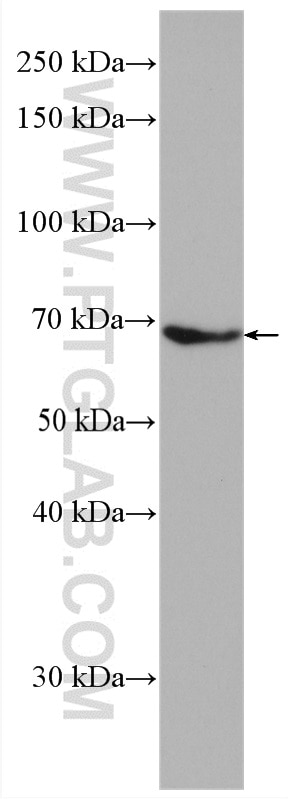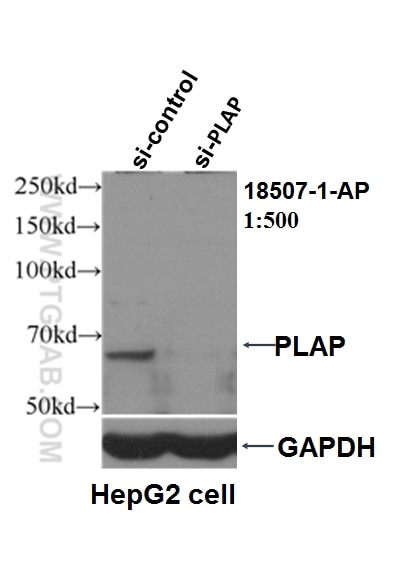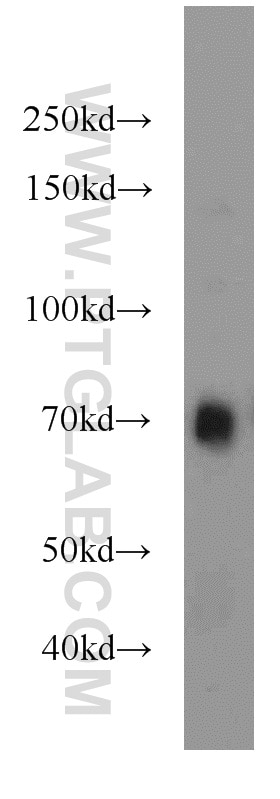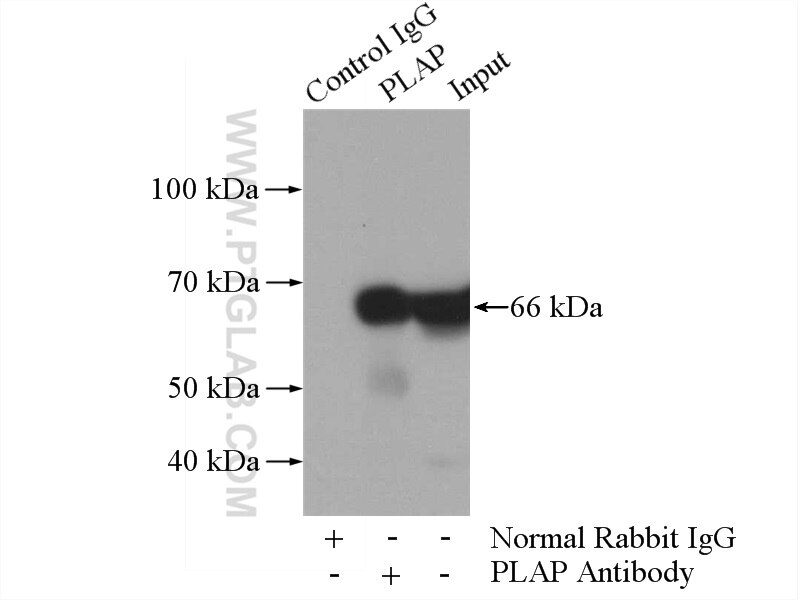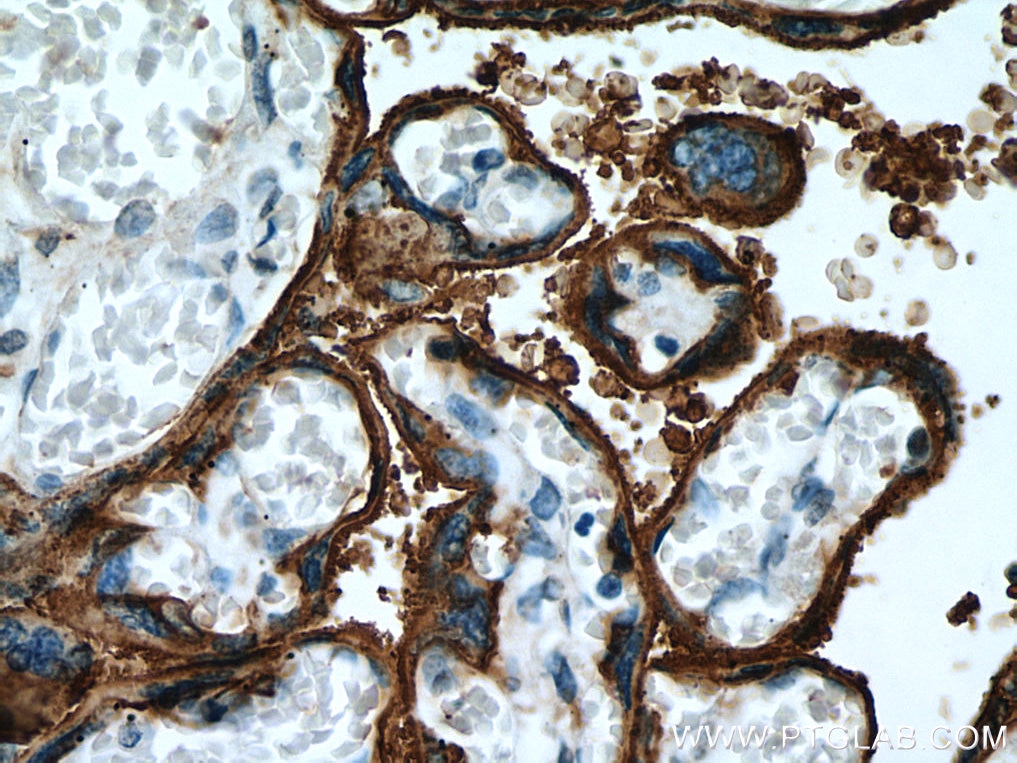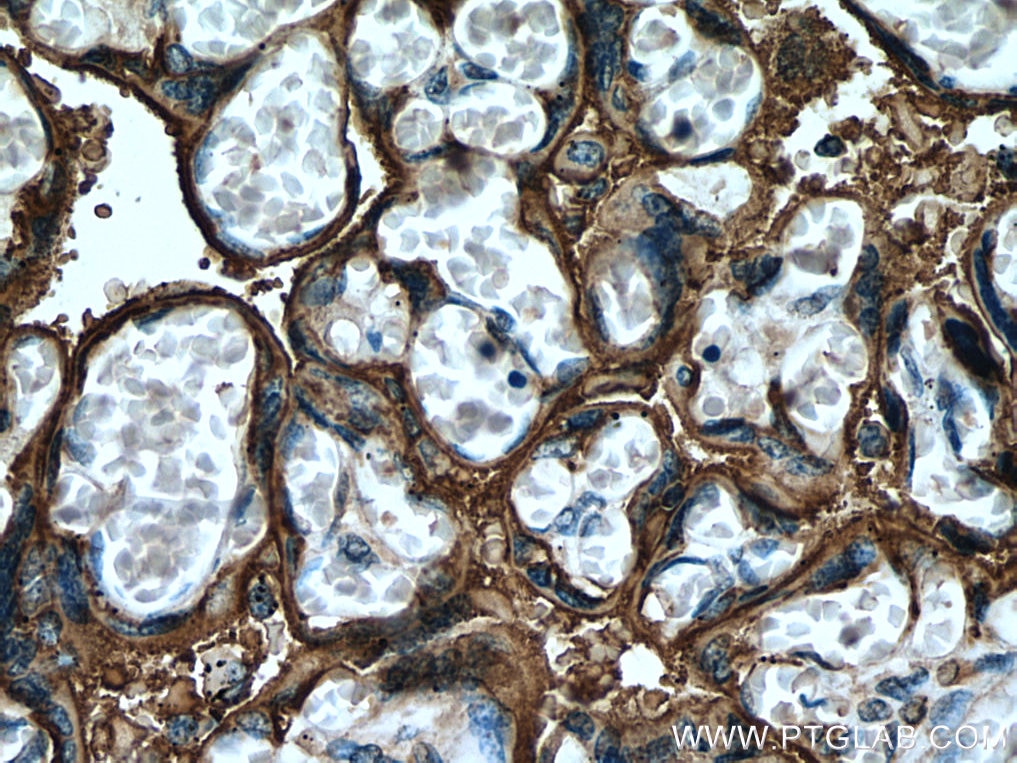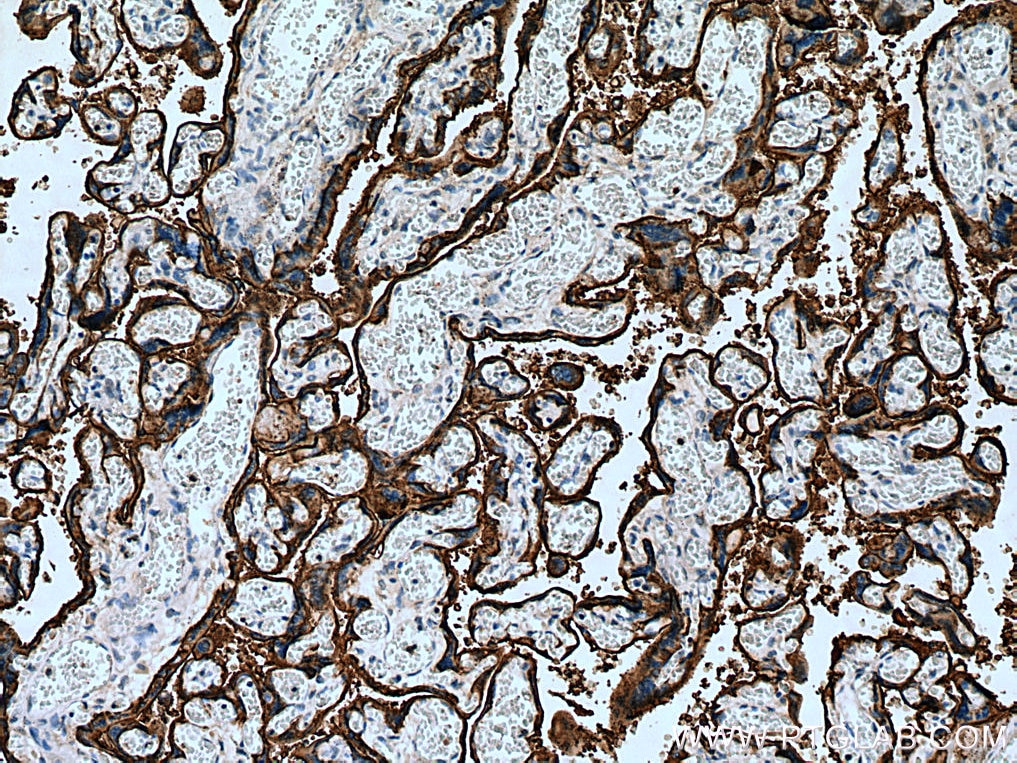Tested Applications
| Positive WB detected in | human placenta tissue, mouse liver tissue, HepG2 cells |
| Positive IP detected in | HepG2 cells |
| Positive IHC detected in | human placenta tissue Note: suggested antigen retrieval with TE buffer pH 9.0; (*) Alternatively, antigen retrieval may be performed with citrate buffer pH 6.0 |
Recommended dilution
| Application | Dilution |
|---|---|
| Western Blot (WB) | WB : 1:1000-1:3000 |
| Immunoprecipitation (IP) | IP : 0.5-4.0 ug for 1.0-3.0 mg of total protein lysate |
| Immunohistochemistry (IHC) | IHC : 1:50-1:500 |
| It is recommended that this reagent should be titrated in each testing system to obtain optimal results. | |
| Sample-dependent, Check data in validation data gallery. | |
Published Applications
| WB | See 13 publications below |
| IHC | See 4 publications below |
Product Information
18507-1-AP targets PLAP in WB, IHC, IP, ELISA applications and shows reactivity with human, mouse samples.
| Tested Reactivity | human, mouse |
| Cited Reactivity | human, mouse, rat |
| Host / Isotype | Rabbit / IgG |
| Class | Polyclonal |
| Type | Antibody |
| Immunogen |
CatNo: Ag13361 Product name: Recombinant human ALPP protein Source: e coli.-derived, PGEX-4T Tag: GST Domain: 199-535 aa of BC009647 Sequence: SARQEGCQDIATQLISNMDIDVILGGGRKYMFRMGTPDPEYPDDYSQGGTRLDGKNLVQEWLAKRQGARYVWNRTELMQASLDPSVTHLMGLFEPGDMKYEIHRDSTLDPSLMEMTEAALRLLSRNPRGFFLFVEGGRIDHGHHESRAYRALTETIMFDDAIERAGQLTSEEDTLSLVTADHSHVFSFGGYPLRGSSIFGLAPGKARDRKAYTVLLYGNGPGYVLKDGARPDVTESESGSPEYRQQSAVPLDEETHAGEDVAVFARGPQAHLVHGVQEQTFIAHVMAFAACLEPYTACDLAPPAGTTDAAHPGRSVVPALLPLLAGTLLLLETATAP Predict reactive species |
| Full Name | alkaline phosphatase, placental (Regan isozyme) |
| Calculated Molecular Weight | 58 kDa |
| Observed Molecular Weight | 66 kDa |
| GenBank Accession Number | BC009647 |
| Gene Symbol | PLAP |
| Gene ID (NCBI) | 250 |
| RRID | AB_10644334 |
| Conjugate | Unconjugated |
| Form | Liquid |
| Purification Method | Antigen affinity purification |
| UNIPROT ID | P05187 |
| Storage Buffer | PBS with 0.02% sodium azide and 50% glycerol, pH 7.3. |
| Storage Conditions | Store at -20°C. Stable for one year after shipment. Aliquoting is unnecessary for -20oC storage. 20ul sizes contain 0.1% BSA. |
Background Information
Placental alkaline phosphatase (PLAP) is a glycosyl phosphatidylinositol (GPI)-anchored sialoglycoprotein , which shows greater resistance to heat inactivation than other alkaline phosphatase. Presented at high levels in placental trophoblasts, PLAP is recognized as an important marker of differentiation in human malignancies.
Protocols
| Product Specific Protocols | |
|---|---|
| IHC protocol for PLAP antibody 18507-1-AP | Download protocol |
| IP protocol for PLAP antibody 18507-1-AP | Download protocol |
| WB protocol for PLAP antibody 18507-1-AP | Download protocol |
| Standard Protocols | |
|---|---|
| Click here to view our Standard Protocols |
Publications
| Species | Application | Title |
|---|---|---|
J Nanobiotechnology Ultrasound-triggered piezoelectric polyetheretherketone with boosted osteogenesis via regulating Akt/GSK3β/β-catenin pathway | ||
Int J Biol Macromol Cranial repair-promoting effect of oxidised sodium alginate/amino gelatine injectable hydrogel loaded with deer antler blood peptides | ||
Aging (Albany NY) Primary cilia regulate gastric cancer-induced bone loss via cilia/Wnt/β-catenin signaling pathway. | ||
ACS Biomater Sci Eng 6-Bromoindirubin-3'-oxime Promotes Osteogenic Differentiation of Periodontal Ligament Stem Cells and Facilitates Bone Regeneration in a Mouse Periodontitis Model. | ||
Mol Cell Endocrinol Long noncoding RNA ZFAS1 suppresses osteogenic differentiation of bone marrow-derived mesenchymal stem cells by upregulating miR-499-EPHA5 axis. | ||

